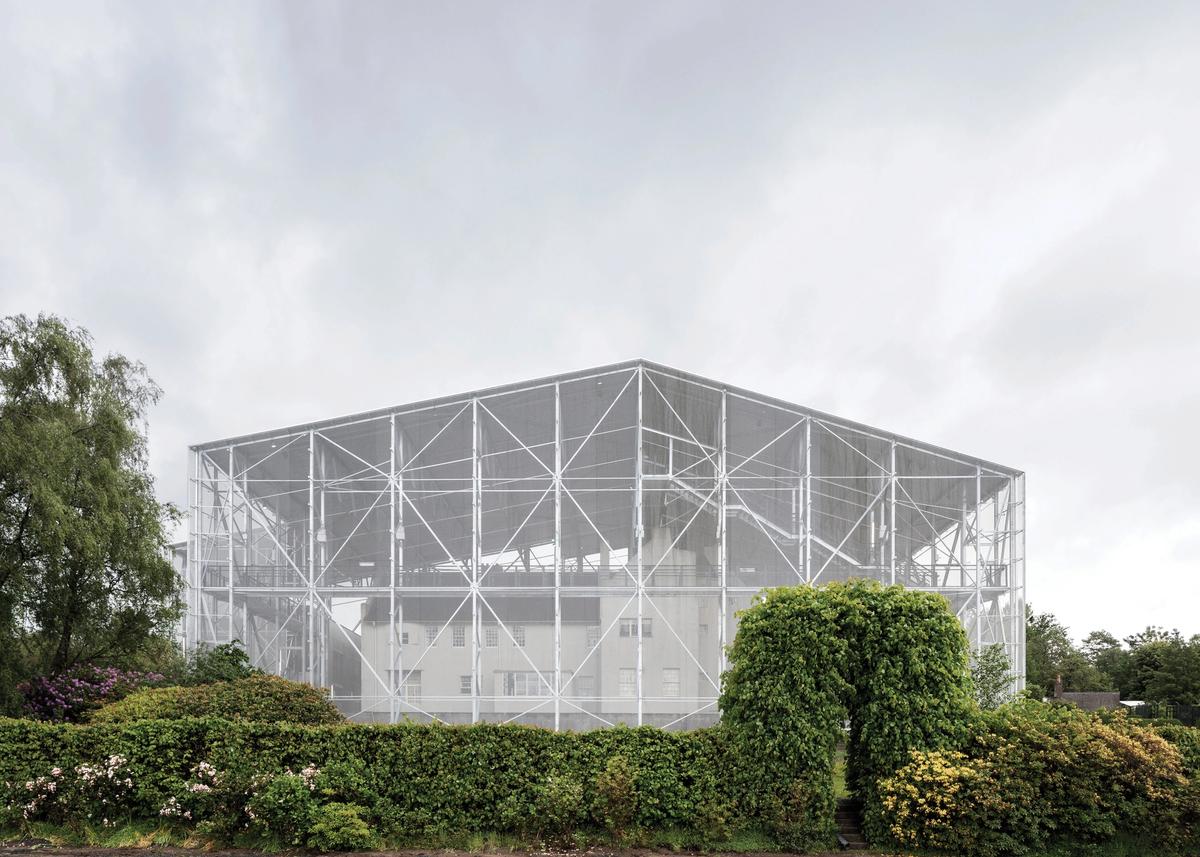A giant airy box shielding Charles Rennie Mackintosh’s Hill House in Helensburgh is attracting as much attention as the 1904 house itself as the National Trust for Scotland firms up plans for conservation of the waterlogged mansion.
The London-based architects Carmody Groarke designed the 197-tonne structure, with a galvanised steel roof and see-through curtain walls of stainless steel chainmail, to allow the house to dry out while also allowing access for the public. Walkways stretching throughout the box allow visitors to inspect the exterior of the dwelling, which has been threatened by rain and damp for generations, and to ponder the conservation challenge; conventional tours of the Mackintosh-designed interiors will also continue.
The National Trust for Scotland, which acquired the house in 1982, predicts that it will take three years for it to dry out while conservators devise a plan to protect its sandstone-block masonry. A top layer of Portland cement, applied to the exterior when it was built, has allowed moisture to penetrate the sandstone but not escape. Bryan Dickson, the trust’s head of buildings conservation, says the solution remains unclear but that it may involve sacrificing that historic layer with the goal of preserving Mackintosh’s underlying aesthetic.
The cost of rescuing Hill House is projected at around £4.5m, of which £3m is drawn from the trust’s reserves and the rest from fundraising. The Getty Foundation also contributed a grant of £95,000 to help the trust find a solution.


